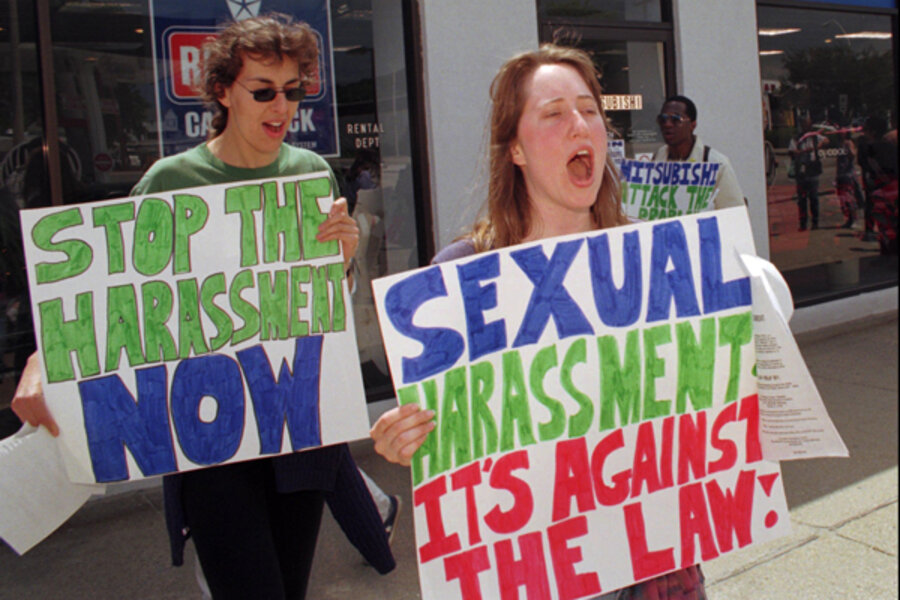Workplace harassment: Same-sex sexual harassment cases are on the rise
Loading...
It happens more often than one might think: A worker sues a fellow worker of the same sex for sexual harassment.
What doesn't happen very often is that the case goes to trial.
That's why a federal trial in Louisiana, which began Tuesday, is making history. John Cherry claims that he was sexually harassed for six months in 2007 by his former supervisor, Michael Reasoner. Both men worked for the Shaw Group, a a Baton Rouge-based industrial services firm (which Mr. Cherry is also suing), and both are married.
It is the first trial of its kind to reach federal court in Louisiana. Mr. Reasoner has responded to Mr. Cherry’s suit with a counterclaim for defamation. Shaw also denies any wrongdoing.
Although the trial is rare, the charges are not. The number of men filing sexual harassment lawsuits is on the rise. And more same-sex suits are being brought.
In 2009, 16 percent of the sexual harassment cases filed with the Equal Employment Opportunity Commission (EEOC) were brought by men, that’s up from 12 percent a decade prior.
"Anecdotally, we have noticed that there have been more cases" of same-sex sexual harassment suits, says James Ryan, a spokesperson for the EEOC, which does not track the number of same-sex sexual-harassment lawsuits.
More common are settlements. Last December, in a high-profile case, the commission settled a “severe same-sex harassment” suit brought against the Cheesecake Factory, a chain of family restaurants, by six men who claimed they’d been harassed repeatedly (and sometimes violently) by workers at the restaurant. The company ultimately paid $345,000 and “other relief” to settle.
Same-sex harasment lawsuits have been recognized by federal courts only since 1998, when the Supreme Court held in Oncale v. Sundowner Offshore Services that same-sex claims did constitute harassment.
“It’s amazing how often it does happen,” says Anne Golden, a partner with Outten & Golden LLP, a New York law firm specializing in employment law. “The victim may be straight or gay, but that doesn’t matter – either way, it’s harassment.”
One reason for the rise in cases may be that men feel more comfortable speaking up and making claims, and, of course, that their cases are now recognized in courts throughout the country.
“I do think that there is less stigma now than 10 years ago for men to bring these sorts of cases,” says Shelley Gregory, director of the LGBT Workers Rights Project and the San Francisco-based Legal Aid Society Employment Law Center.
The Louisiana case is similar to many same-sex sexual harassment cases, she adds.
“Often it’s straight men who are doing the ridiculing, or trying to communicate some kind of derogatory message,” says Ms. Gregory.
Only 6 percent of sexual harassment cases make it to court, according to a new study by the American Bar Foundation. Of those, the plaintiff prevails in one in three cases.





